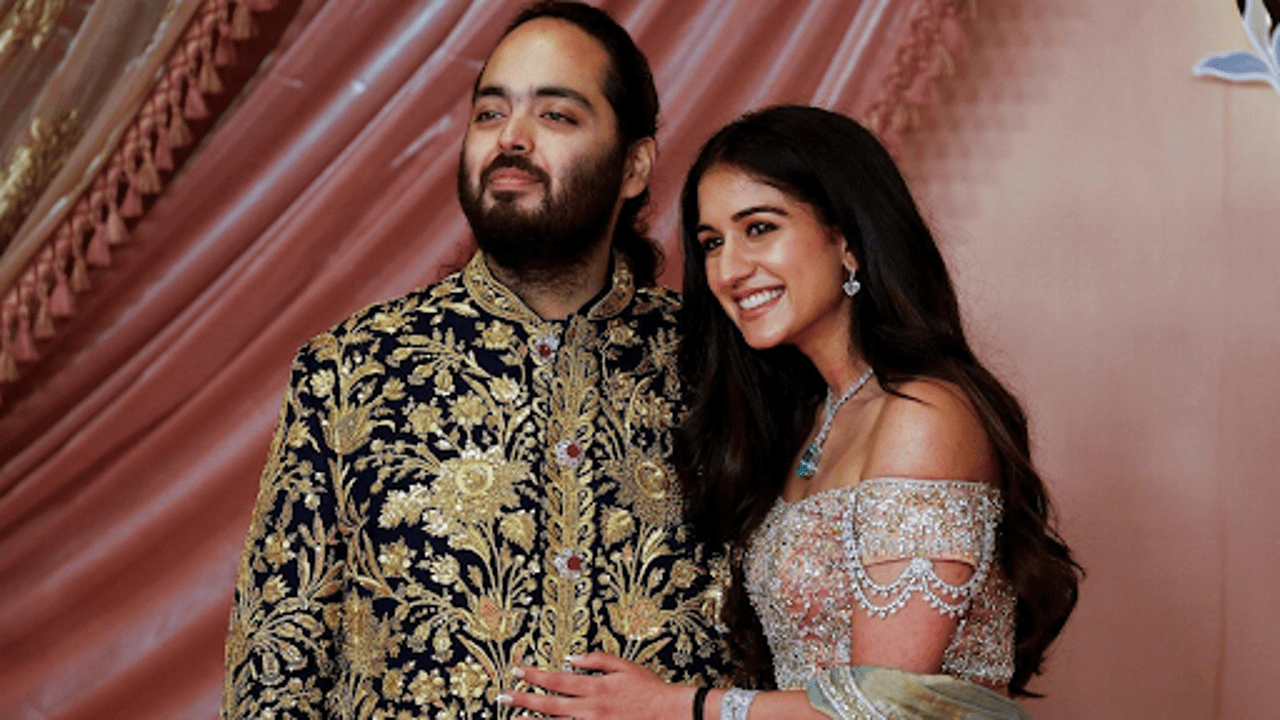
After months of celebrations, the Ambani wedding festivities are drawing to a close.
In India, the question of "how much is too much?" resonates deeply as the grand wedding festivities for Anant Ambani, the youngest son of Asia's wealthiest man, reach their final stages. Anant is set to marry Radhika Merchant, daughter of prominent pharmaceutical magnates Viren and Shaila Merchant, this weekend, after four months of extravagant celebrations.
The lead-up to this wedding has been nothing short of spectacular. Lavish events have showcased stunning outfits, exquisite jewelry, and fairytale-like decorations, all attracting significant public attention. Writer Shobhaa De describes it as "nothing short of a royal wedding," suggesting that today's billionaires have become the new maharajahs of India. She notes that such grandeur is what shareholders expect from the Ambani family, given their immense wealth.
However, this display of wealth has sparked controversy. Critics point out the stark contrast between the Ambani family's opulence and the reality of millions of Indians living in poverty. Commentator Santosh Desai remarks that the wedding reflects a broader trend in India, where wealth is no longer whispered about but flaunted openly. The scale of this wedding, however, is exceptional even by these standards.
The Ambani family is a household name in India, with Mukesh Ambani at the helm of Reliance Industries, which spans various sectors, including oil, telecom, and technology. Mukesh's net worth is an astonishing $115 billion, making him a central figure in the nation's economy. His youngest son, Anant, is a board member at Reliance Industries and embodies the family's business legacy.
Despite the family's immense wealth being well-known, many outside India were unaware of the scale until the three-day pre-wedding celebrations began in March. This high-profile event attracted an array of global stars, including Facebook's Mark Zuckerberg and Microsoft's Bill Gates.
The pre-wedding festivities kicked off in Jamnagar, Gujarat, where the Ambani oil refinery is located. About 1,200 guests were treated to a series of lavish events, starting with a dinner held in a spectacular glasshouse designed specifically for the occasion. The structure drew inspiration from the Palm House in Brooklyn, a favorite of the bride-to-be during her college years.
Rihanna's performance at the event, where videos went viral showing the Ambani family dancing with the pop star, turned heads and brought widespread attention to the celebrations. Guests enjoyed an impressive array of about 2,000 dishes prepared by top chefs and were accommodated in luxurious tents, complete with personal makeup artists and stylists.
The celebrations included themed dress codes, such as a "jungle fever" theme for a family trip to an animal sanctuary. Radhika Merchant's bridal outfits were equally impressive, featuring lehngas adorned with thousands of Swarovski crystals and custom-designed dresses. Anant sported designer outfits and even showcased a Richard Mille watch valued at around $1.5 million.
The media captured every moment of these extravagant events, likening them to the days of ancient maharajahs. Events culminated in a spectacular finale with fireworks and light shows, setting the stage for what was yet to come.
The couple later took their celebrations abroad, cruising along the Italian coastline and stopping in picturesque cities like Rome and Cannes. This leg of the festivities featured performances from stars like The Backstreet Boys and Katy Perry, further solidifying the scale of the celebrations.
This week, as the final wedding festivities began in Mumbai, Justin Bieber performed, creating buzz as a video of his performance reached millions of views. Speculation is already swirling about potential appearances by other global superstars, including Adele, at the actual wedding.
India is no stranger to extravagant weddings; it ranks as the second-largest spender on wedding celebrations after the United States. Recent trends show weddings becoming increasingly extravagant, often driven by societal expectations and the desire to impress. High-profile weddings, such as a $74 million ceremony in 2016, have made headlines, and the Ambani family has hosted several other lavish events over the years.
The Ambani siblings' weddings have consistently attracted attention, featuring performances by major artists, including Beyoncé and Coldplay. Such celebrations not only showcase personal milestones but also present unique marketing opportunities for India's wedding industry.
Interestingly, the Ambanis have also hosted mass weddings for underprivileged couples as part of their celebrations. Despite the opulence, this gesture reflects an awareness of social issues, even as critics voice concerns over the glaring disparity in wealth and resources.
With the Ambani family’s latest celebrations, public criticism has grown louder, especially regarding the traffic disruptions caused by the events. Mumbai residents have expressed frustration over the heavy security measures and the inconvenience caused by the massive influx of guests.
Experts in the wedding industry recognize this event as a showcase of the best in logistics, design, and hospitality. Planning such a grand affair takes years of meticulous preparation and involves coordinating with numerous entities, including securing permissions across countries.
While the Ambanis have not disclosed the total cost of these extravagant celebrations, estimates suggest they have spent between $132 million and $156 million. This includes not only celebrity performances but also significant investments in building cultural sites and temples in Jamnagar.
As the family celebrates what may be their last wedding for some time, the public continues to grapple with the contrast between the Ambanis' wealth and the challenges faced by many ordinary citizens.
Anant Ambani's wedding serves as a powerful reminder of the extremes of wealth in India. While it captivates some with its grandeur, it also raises questions about the social implications of such displays in a country where many struggle to make ends meet. The balance between celebration and responsibility remains a pressing concern as the festivities conclude.















